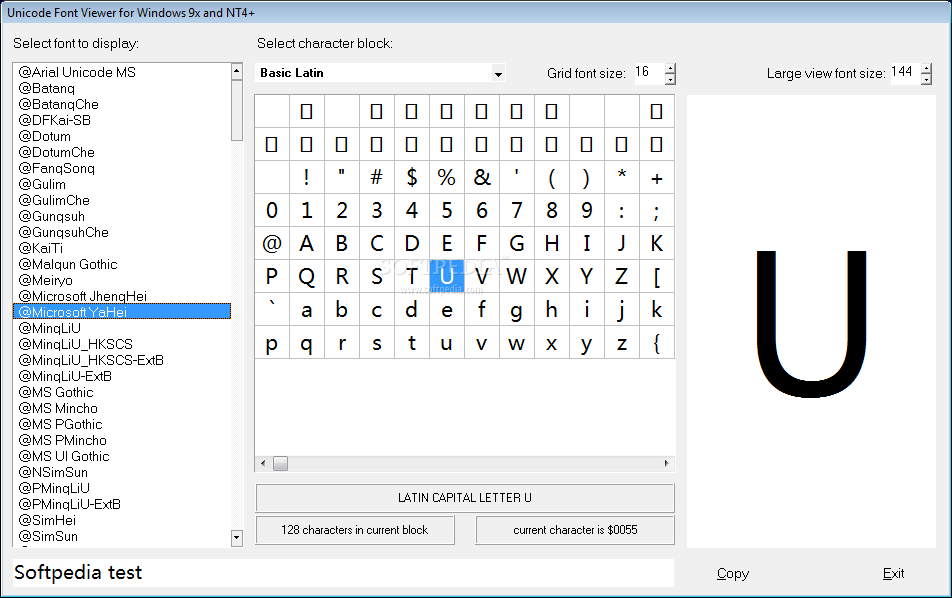
- Text to unicode codepoints how to#
- Text to unicode codepoints code#
- Text to unicode codepoints series#
CharNext is the function I'm looking for. MSDN just isn't very good about putting all the string functions in one place.
Text to unicode codepoints how to#
However, I'm not using ICU, so any references on how to implement my own equivalent functionality would be an accepted answer.Īnother edit: It turns out that the Windows API does indeed offer this functionality. How can I iterate over a bunch of Unicode codepoints as characters?Įdit: The Break Iterators offered by ICU appear to be pretty much what I need. How could I implement backspace? It obviously can't just erase the last codepoint, because they might have just entered more than one codepoint. I know that this specific character can be represented as one codepoint as well, and can be normalized to that form, but I don't think that's possible in the general case. is a letter, whatever.įor example, imagine that I was writing a Unicode-aware textbox, and the user entered a Unicode character that was more than one codepoint- for example, "e with diacritic".
Text to unicode codepoints series#
What I really need to do is iterate through these codepoints as a series of characters, not a series of codepoints, and determine properties of each individual character, e.g. All codepoints are arranged in 17 so-called planes. In practice Unicode has 120803 codepoints defined at the moment, mapping characters from Egyptian Hieroglyphs to Dingbats and Symbols. Theoretically, these should be all characters ever used.

This method will return the Array of characters (the surrogate pair) needed to represent the given CodePoint which we can then join-together in order to print the Emoji. is dedicated to all the characters, that are defined in the Unicode Standard. Characters are only converted on a one-to-one basis no combining characters (eg U+20DE COMBINING ENCLOSING SQUARE), many to one (eg ligatures), or context varying (eg Braille ) transformations are done. In order to generate this surrogate pair from a Unicode CodePoint, Im going to use the static.
Text to unicode codepoints code#
I've also read that I can use echo json_encode("test") īut again I only get test printed to the screen.ĮDIT1: Actually I think they are called code units not code points.I've got a series of Unicode codepoints. What conversions does this do This toy only converts characters from the ASCII range. Click the symbols below to check their values in all forms for quick reference.). (Input or paste unicode, hex, utf-8 to their related input box, and then click the related calculate button will do the conversion. When I tried it I included the script in a file along with $str='test' Escaped Unicode, Decimal NCRs, Hexadecimal NCRs, UTF-8 Converter. I've also tried Scott Reynen's code here How to get code point number for a given character in a utf-8 string? but I can't seem to get it to work. I've read that I can use iconv to do this, but I've had no luck and can't find any examples on how. deceze's answer did the trick though, thank you very much! For example the characters above are represented with the code points U+0041.

I tried the below options, but had no luck. The Unicode standard describes how characters are represented by code points. Input currently recognised: String with any characters, e.g. A code point is expressed as U+n where n is four to six uppercase hexadecimal digits. Even though I wanted to do the conversion in PHP the converted unicode was to be used in JavaScript. As I work on it, it will be missing features, occasionally its data, and sometimes give errors. Unicode uses a standard notation to denote code points in running text. In my original question, I had mistakenly thought that \u was a standard for encoding unicode when in fact it is just being escaped in JavaScript ( Thankyou Jukka K.

EDIT 2: I'd like to convert English words to unicode numbers using php5 and then produced as \u* * * * where * * * * is the unicode number.


 0 kommentar(er)
0 kommentar(er)
